Table of Contents
Critical Cleaning for Titanium Dioxide
Titanium dioxide (TiO2) is used in products for the personal care and pharmaceutical industries. TiO2 is an inert molecule and can be difficult to clean from equipment if not handled properly.
Overview
Your "How to Clean" guide discusses:
This guide discusses:
- Titanium Dioxide's popularity is on the rise in pharmaceutical and cosmetic products.
- Traditional alkaline and acidic cleaning processes lead to white haze and production downtime.
- Targeting your soil, not your components is a proven way to prevent leftover residue or white haze.
- Not all soils are created equal. A proper cleaning solution may require custom formulated detergents.
TiO2 Popularity
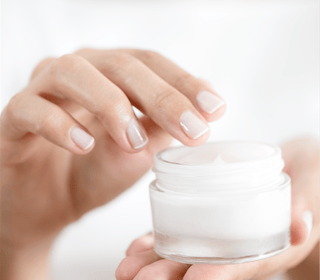
In the food, pharmaceutical, and personal care industries, Titanium Dioxide (TiO2) is used to help produce the white opaque color to associate commonly found in household products such as toothpaste, gum, white frosting, lotions, and pharmaceutical tablets with being clean and pure. The TiO2 resists discoloration and has the additional benefits of being a physical block for UV radiation in sunscreens and lotions. The popularity of TiO2 used in personal care and pharmaceutical products has been on the rise. In fact, an article in Sensient’s “Cosmetic Pulse” , claims that over the past 4 years the number of new sun care products containing TiO2 increased by 42% due to a growing understanding of the sun’s impact on our skin and titanium dioxide’s ability to allow for a broad UV absorption. The increased usage of titanium dioxide is great for both consumers and manufacturers of the pigment but it has caused some challenges for cleaning engineers.
Common TiO2 Cleaning Issues
Every Industry has its challenging residues to clean.
An ineffective cleaning process can lead to:
- Increased downtime
- Decreased asset utilization
- Product impurities
- Multiple safety concerns.
Whether the cleaning method is Clean In Place (CIP) or Clean Out of Place (COP), cleaning engineers have complained of a ‘white haze’ that is left behind on the stainless steel tanks. This white haze that is leftover after a cleaning will cause production downtime, re-cleaning, and unwanted audits. Any cleaning engineer will tell you that re-cleaning is certainly something they wish to avoid.
White haze occurs when ingredients fall out of solution and stick to the stainless steel vessel. While it is easy to point to titanium dioxide as the culprit due to the color of the pigment, both hard water and silica must also be ruled out when determining what is stuck to the walls of the vessel.
Other Culprits:
- Hard water is an unsuspecting but common culprit of white haze. Calcium and magnesium in hard water can form the white haze because they have an affinity for stainless steel surface. Selecting the right detergent will prevent any white haze caused by hard water.
- Silica (SiO2) can also lead to the white haze. Like hard water this can be overcome by selecting the proper detergent.
While the hard water and silica should always be considered, titanium dioxide is the most common cause for the white haze. Off the shelf alkaline and acidic detergents are often used in traditional cleaning processes. These detergents are proven in certain applications but in cases involving titanium dioxide, they often end up targeting the titanium dioxide. The targeting of TiO2 works by dropping the pigment out of the solution. Because TiO2 is essentially an inert substance, it wants to find a surface to adhere to and the stainless steel walls are attractive. This will create trouble for any cleaning process. This TiO2, that is now coating the equipment walls, is a different entity as compared to the original soil. Titanium dioxide is very difficult to remove because it does not readily interact with the detergent solution.
Check out this video to see a real life example of best practices for cleaning this white haze.
Whether the hard water, silica, or titanium dioxide is responsible for the white haze, the haze will create problems.
White Haze Problems
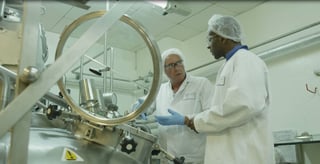 If these problems sound familiar, you are not alone.
If these problems sound familiar, you are not alone.
If white haze does develop, the equipment will need to be re-cleaned until the remaining residue is removed before the equipment is put back into production. The need for re-cleaning can trigger an audit and creating expensive downtime. It also puts a lot of stress on Quality Assurance and Quality Control engineers because the process to remove the TiO2 is not a planned or validated process.
Common approaches to cleaning the white haze involve the use of hydrogen peroxide. While hydrogen peroxide will often do the job by removing the TiO2, it causes long term issues over time because it oxidizes the stainless steel tank and over time can cause expensive maintenance to fix.
If a white haze develops, it means there are ingredients falling out of the solution and the wrong detergent is being used. While there are solutions to eliminating the white haze, the focus should be on selecting the right detergent to prevent the white haze from developing. This will keep Operational Equipment Effectiveness (OEE) up, which will have a significant impact on a company’s bottom line.
Fortunately, there are proven detergents and solutions to cleaning products that contain titanium dioxide. Growth in usage of TiO2 does not need to lead to a growth in headaches for cleaning engineers. We’ll now turn our heads to more analytical and systematic approaches to cleaning products that contain titanium dioxide.
Target the Entire Soil
A Unique Approach to Critical Cleaning.
Many cleaning engineers have wanted to pull their hair out due to the trouble of cleaning products that contain titanium dioxide. To clean effectively and improve up time, the best approach is to target your entire soil, not the components. Of course, it is critical to know the active pharmaceutical ingredient (API) and the excipients, but the final solution should focus on the entire soil rather than the components. This approach keeps the titanium dioxide in solution and thus it will not adhere to the stainless steel walls. 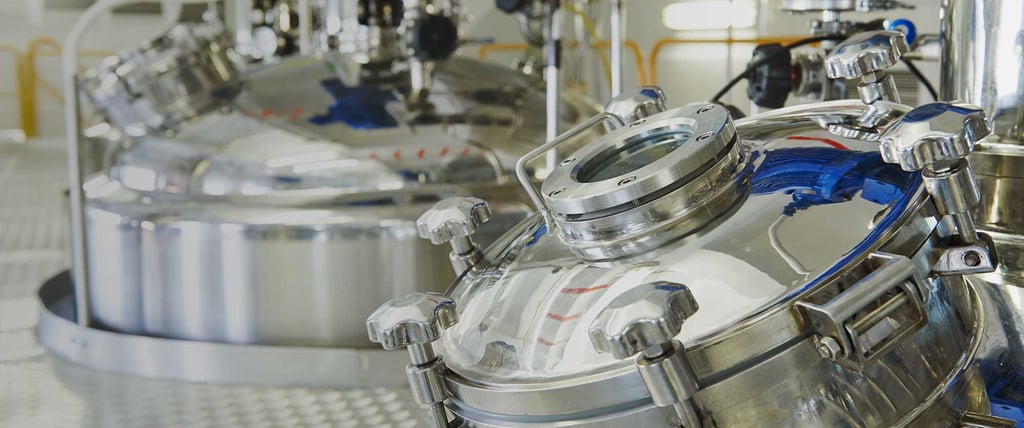
How to Find Your Solution
Find Your Solution in 4 Steps:
- Send your soil for testing: There are a handful of critical cleaning companies that have processes to select the right detergent for your soil. Send your soil and cleaning information to one of these companies to receive their recommended solution. Be sure the company you choose selects a detergent that is designed to work on your specific soil.
- Await results analytical testing: The critical cleaning company will apply your soil to coupons and perform coupon studies inside of beakers designed to study the effectiveness of different detergents. Beaker studies will have varying temperature, concentration of detergent, and time applied to evaluate cleaning effectiveness. The goal is to limit the ‘action’ (agitation) required and let the chemistry do the work. This process is commonly referred to as T.A.C.T.
- Trial Detergent: Not all soils are the same. This often means that a detergent may need to be specially formulated in order to ensure the soil is removed in its’ entirety the first time. Off the shelf detergents will often lead to the problems such as white haze described above. A formulated detergent will target the entire soil.
- Validation: Perform necessary validation requirements in order to confirm the detergent delivers consistent results.
Following these steps is a proven way to making sure that you will never have to worry about cleaning titanium dioxide again. It doesn't have to cost a lot of money and you'll see increased profits due to the increased up time or operational equipment efficiencies.
Clean Your Coating Pan with Chematic
Cleaning Titanium Dioxide is not as difficult as it may seem. The key to cleaning success is to change your thinking to targeting your product as a whole solution and to work with a critical cleaning company to help optimize your current process.
By doing this you will be able to:
- Decrease downtime
- Increase your asset utilization
- Increase production
Chematic, a Dober Company, can help you achieve your targeted goal from ACM study to validation with our Analytical Tech Transfer package. Request to start your ACM study today!
Ready to Start Optimizing?
We Can Help.
Start your FREE Custom Cleaning Evaluation with us today and start your journey to maximizing operating efficiencies and increasing your plants production.
Efficiency, quality and performance is what you will experience with Dober’s Chematic brand. I enjoy working closely with our customers to help them to select the right detergent for their critical cleaning process and seeing them achieve their goals.
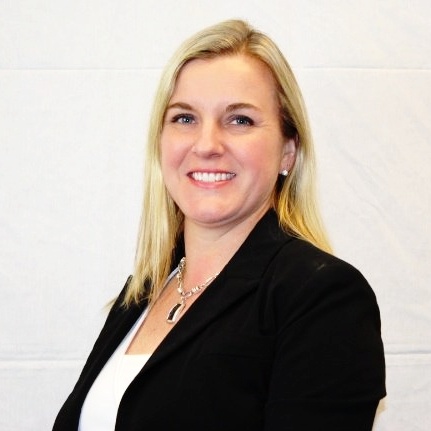
Kristina Wesley Business Development Coordinator
Selecting the right detergent for your residues is only part of the cleaning equation. Our formulated detergents target the entire product composition, providing you with an effective and repeatable cleaning process.
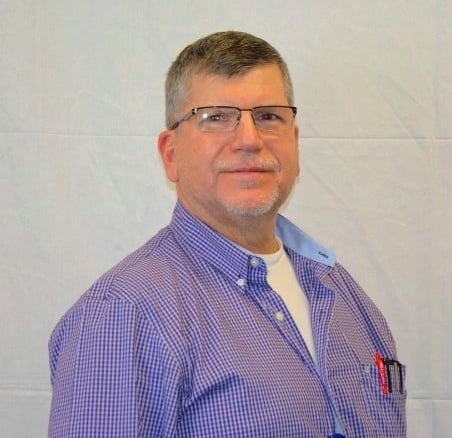
Adam Kowalewicz Chematic Lab Manager


